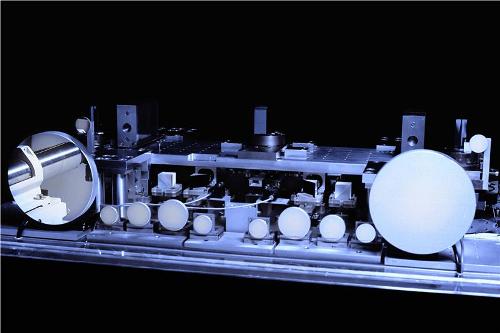The Institut Laue-Langevin (ILL) researchers have shown the bending of gamma rays generated by radioactive decay of atomic nuclei. Physical Review Letters states that in order to identify bending or ‘refraction’ at maximum energies, a common classroom experiment version with glass prisms was used by the team.
 The high resolution gamma ray facility GAMS at ILL. Copyright: ILL/ Bernhard Lehn
The high resolution gamma ray facility GAMS at ILL. Copyright: ILL/ Bernhard Lehn
The discovery of ‘significant’ refraction of gamma rays contributes to nuclear photonics and high energetic light beams are used to analyze the atomic nucleus. When the rays are bent and directed into concentrated beams, remote scanning by gamma ray microscopes can be achieved.
Refraction in gamma rays has been analyzed by scientists from the ILL and the Ludwigs-Maximilians University of Munich.
A series of sensitive instruments for measuring refraction have been constructed in ILL, in addition to generating Europe’s most intense gamma ray sources. The ILL’s PN-3 facility-generated gamma rays were analyzed through two silicon crystals. A silicon prism is kept mounted along the instrument where half of the gamma ray beam undergoes refraction. This refraction is then detected by another silicon crystal and compared with the rest half of unrefracted gamma rays.
The energy of the gamma rays enhances the declining refraction values. These values are then increased to larger positive refraction values analogous to visible light. The values were so high. According to the researchers, replacement of higher refracting materials like gold for silicon prisms can increase the refraction level suitable for optical techniques.
Based on the ability of gamma rays to easily penetrate material, the potential applications include better production and trial of new, more targeted radioisotopes for cancer treatment; selective and less destructive medical imaging techniques can be achieved; and using high penetration of gamma rays or remote characterization of nuclear materials to scan for nuclear materials.